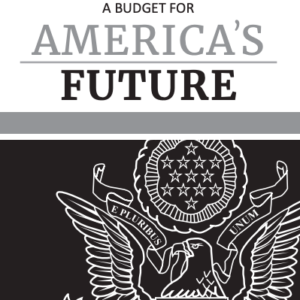Two clichéd catch phrases have become associated with the release of a president’s budget.
The first is “dead on arrival.” The president’s opposition in Congress will announce that there is nothing in the big book that is relevant to anything. And because Congress holds the power of the purse, that pronouncement is more than symbolic.
The second catch phrase is “negotiating with yourself.” If the president’s budget makes any conciliatory gesture toward the opposition, the president’s party will grouse that they could get more in any subsequent agreement if the president would hold a firmer line, so that a 50-50 deal would be closer to what they want.
A related back-biting term is “triangulation”: The president wants to stand apart, play his party off against the opposition, and then get a deal somewhere in between.
Appropriately enough, we last heard of “triangulation” and “negotiating with yourself” in the Clinton years, when the result of all of the byzantine maneuvering was the first budget surpluses in 29 years — which remain, to this date, the last.
Well, there is no “negotiating with yourself” in this year’s budget. This budget follows most of the last two decades in offering no concession to the other side.
The policies are solely those of the president, which the other party will label it as “dead on arrival” — and so the federal government will struggle for yet another fiscal new year just to keep the lights on, and to avoid another shutdown.
And President Clinton’s place in budget history is safe. This administration’s goal is now to balance the budget 15 years from now (that is, in 18 total years, requiring the administrations of a minimum of two more presidents to finish the job).
Why is the budget outlook so bleak? After all, this year’s budget does claim a path toward balance, even if in the very long term. But there are several signs of trouble in the details.
One issue is the budget’s economic assumptions. Because of the aging of the population, the growth of the labor force is slowing dramatically — from about 2 percent in the 1960s to the 1980s, to less than 0.5 percent in the next 10 to 20 years.
That slower workforce growth comes right off of the top of our economic growth rate — unless productivity growth jumps to make it up. I pray that it does. I fear that it won’t.
By assuming growth almost a full percentage point higher than other forecasters, and adopting tax cuts and spending programs based on that assumption, the budget leaves us wide open to trouble.
Likewise, the budget assumes that interest rates will fall lower than do other forecasters, and will stay low — in practical terms, forever. If and when interest rates ever rise, for whatever reason, the budget will balloon.
Finally, the budget assumes unprecedented cuts in the annual appropriations for the nation’s domestic spending. The key word here is “unprecedented.”
Domestic spending funds our “infrastructure” — highways, airports, water, sewer; our systems of law enforcement and justice, our education and research; and many other functions. Think of that infrastructure as essential overhead for our whole society.
As the population and production get bigger, we need a roughly proportionately greater amount of asphalt and concrete, for example; and the asphalt and concrete that we already have must be repaired and renewed.
Our infrastructure spending needs to keep pace with our overall economy. This budget cuts such spending relative to the size of our economy to one-third lower than the smallest number on record in just five years, and more thereafter.
It is easy to assume future cuts in the spending in one-year appropriations bills; past budgets often have. But when we get to those future years, those impossible cuts never happen.
Before forever, we will need a real budget that is not “dead on arrival.” Even if a president does not want to negotiate with himself, he will have to recognize the need to negotiate with the other side.
We are heading into a wall, and we are running out of time; we need to start over, and soon.

